Central Asia - Uzbekistan - Bukhara - Part 1
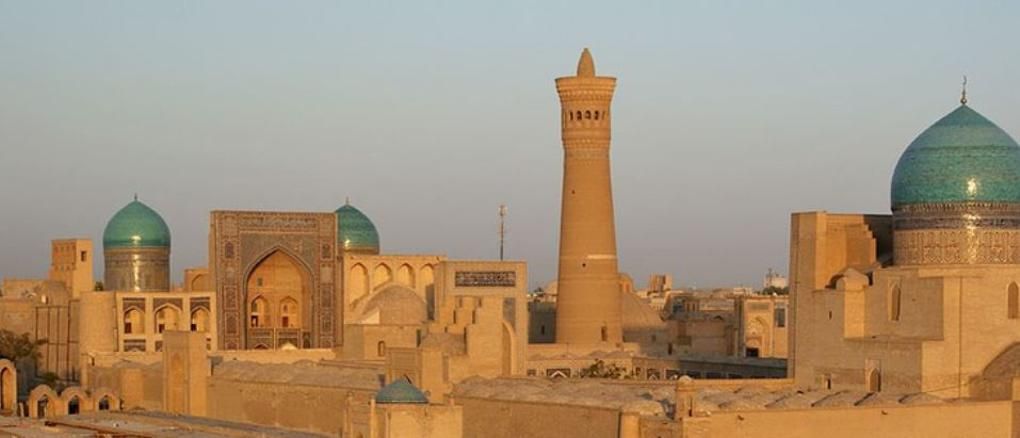
It was a delight to arrive in the old town of Bukhara - little traffic in the small streets lined with brick buildings - cobbled lanes, arches and cupolas drawing us back in time, a subtle invitation to explore this city of poetry and legends. Still with blue domes and vibrant majolica tiled walls, but now blending with the lace of stone masonry covered with the dust of centuries. Bukhara captured my heart.
The reconstructions here are more subtle than in Samarkand so the old centre hasn’t changed much - the craftsmanship in building the madrasahs, minarets, mosques and mausoleums from different eras represent the development of architecture over the last 25 centuries - recognised today as a UNESCO World Heritage site.
The domes dating back to 15th and 16th centuries of shops for money changers, jewellers and headwear remain preserved today confirming Bukhara as a crossroad of caravan routes: another pearl of the Great Silk Road, where more than 60 caravanserais provided an oasis for traders from India, China, Iran and other countries.
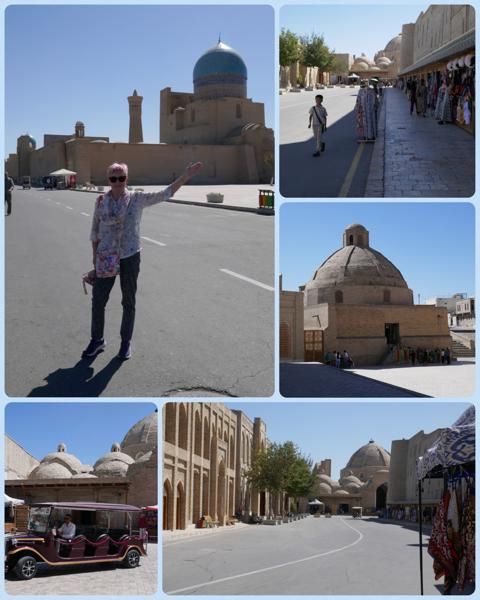
I'm standing in front of the crown of Bukhara - the Poi Kalon Complex (Kalon means great) with the merchants domes of yesteryear and a touch of today’s marketing - a Rolls Royce golf cart available for paying passengers.
As we sat in the shade of an old mulberry tree, within the Poi Kalon Complex we admired the Miri Arab Madrassah flanked on both sides with small towers and decorated with curvy mosaic, multi coloured ornamentation and a 2-levelled terrace leading to the usual small classrooms.
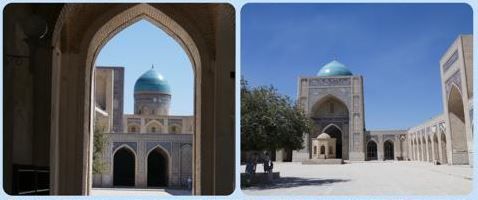
It was the last of the complex to be built - in the 16th century, during the rule of the Shaybanids - a dynasty of Turko-Mongol origin, who ruled over most of modern-day Kazakhstan, parts of both Uzbekistan and southern Russia in the 15th century.
In front of us the Kalon Mosque, the largest in Bukhara with space for 100,000 worshippers, considered to be one of the most ancient in Middle Asia, with an inscription at the entrance indicating construction was completed in 1514. The brilliant blue dome, blending with the azure blue sky
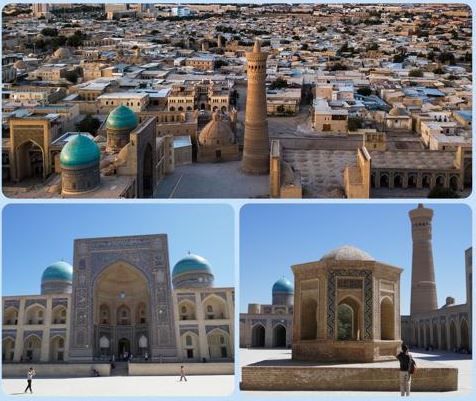
The Kalon Minaret, built in 1127CE, at a height of 47m, symbolising the supremacy of Islam, the call to prayer ringing out over the old city - so impressive Genghis Khan decided to spare the tower after conquering Bukhara.
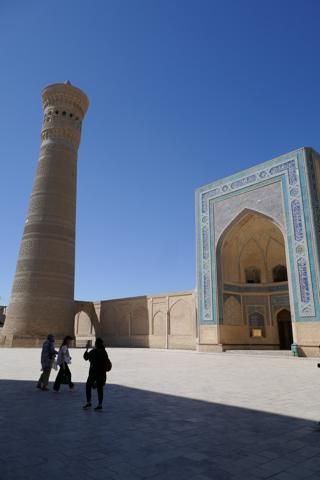
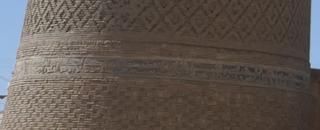
It’s quite unusual for decorative bands to adorn a minaret - 3 of which record the construction date, as well as the name Arslankhan, the contributor and governor of Bukhara, and Usto Baki, the architect - whose grave, according to legend, in one of the neighbouring blocks.
Also known as The Death Tower - in ancient times people were executed and thrown from the top - a grisly legend!
We visited Chor Minor (which means four minarets in the Tajik language), built in 1807, a small historic gatehouse for a now-destroyed madrasah, boasting four minarets, topped with blue domes. The minarets are simply towers, each with differing decorative elements - images include a cross, Christian fish and Buddhist prayer wheels - it’s thought the creators of the madrasah aimed to reflect the four religious streams.
The tiny interior is now a handicraft shop - as with all the historic sites in Uzbekistan, the owner rents the space from the city council at a fair price, in return cleaning the interior and sweeping the courtyard. I purchased a small bag here.
Did we spot a stork’s nest atop one of the towers? Yes indeed, but just plastic ones - a reminder that many storks called Bukhara home dining on the myriad of insects that in turn feasted on stagnant waters of the pools and canals.
The water wasn’t changed often and Bukhara became notorious for water-borne diseases. It is said the average 19th century Bukharan died by the age of 32.
These days the water is clean and many pools no longer exist - people live longer but sadly the storks have found another home. Later in the tour we saw many storks nests near the border when we travelled to Tajikistan.
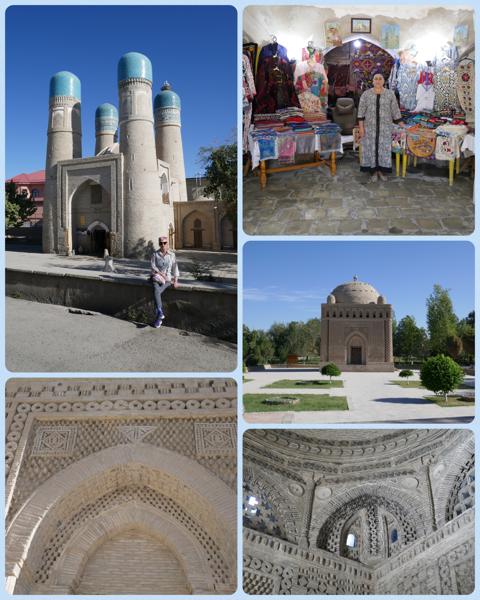
As we walked through a beautiful tree-lined park with small canals, a pool of water and an amusement park, we came across the cube shaped Ismail Samanis Mausoleum. It’s quite small with no less than 18 different types of brick laying techniques.
The mausoleum is one of the oldest buildings remaining from the rich Persian Samanid dynasty - rulers of Central Asia until the 10th century. When Genghis Khan invaded the city, a flood had covered the mausoleum with mud, protecting it from the destruction that ravaged the rest of the city. Rediscovered in 1934, it took two years to clear the mud that covered it.
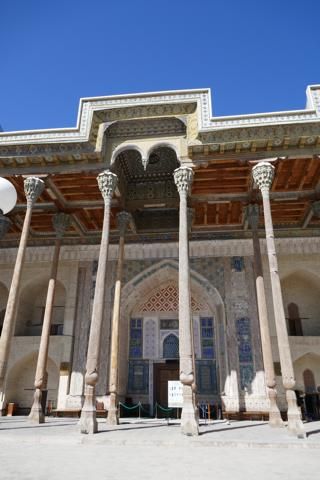
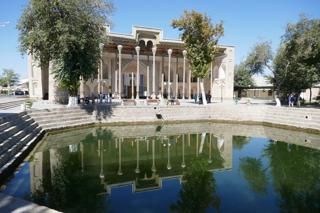
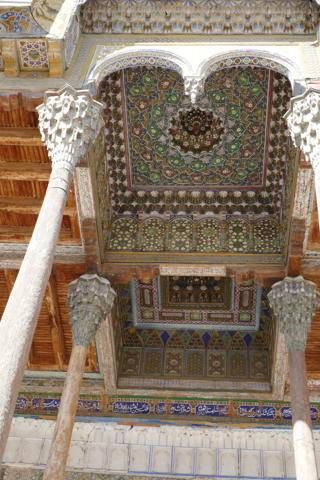
The Bolo Khauz Complex yet another architectural marvel. The Friday Mosque used in wintertime, was built in 1712, while the stunning portico only in 20th century - a summer terrace with 20 intricately carved wooden pillars and a ceiling covered in gorgeous frescoes and geometrical patterns.
The reservoir in front offers wonderful reflections, especially of the pillars.
Bukhara was famous for its water system - up until a century ago, the city had an extensive network of water canals and more than 200 stone hauz (pools). Locals would gather, gossip about their neighbours and wash their clothes.
As I wandered along the canals and cobbled streets, merchants plied their handicrafts, still made by traditional methods handed down through the generations; they too were gossiping and I’m sure the walls were whispering secrets from the past.
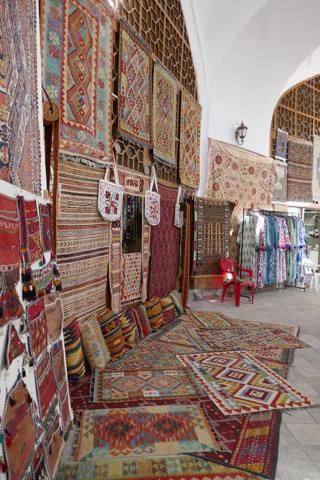
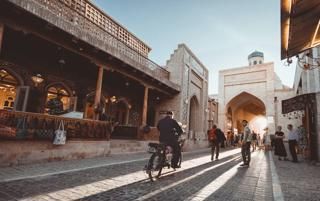
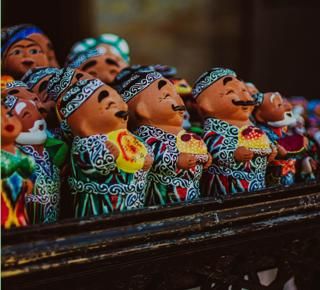
Join me tomorrow as I continue to explore beguiling Bukhara.
